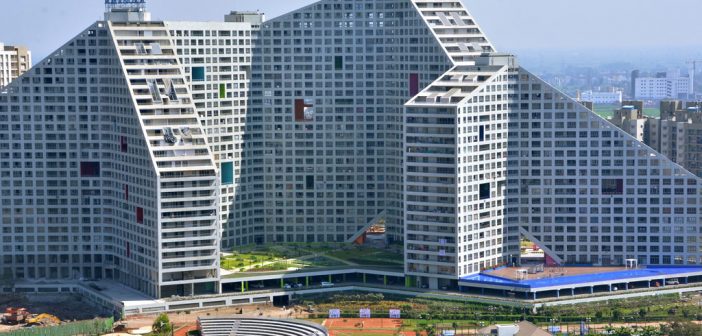Hadapsar, once a quiet agricultural area on the eastern outskirts of Pune, has undergone a dramatic transformation in the past few decades. Today, it stands as one of Pune’s major IT hubs, housing global companies and contributing significantly to the city, state, and national economies. This development has been driven by strategic infrastructure improvements and the rise of commercial and residential complexes, with IT parks playing a central role.
From Farms to IT Powerhouse
In the past, Hadapsar was primarily farmland. The shift began with the establishment of key IT parks, particularly Magarpatta City and SP Infocity, which drew major corporations and a large workforce to the area. The development of Special Economic Zones (SEZs), like Magarpatta, was crucial in attracting global companies, boosting employment, and spurring further urbanization. The presence of Amanora Park Town, an integrated township with high-end residential and commercial spaces, further accelerated this change.
Economic Impact
Hadapsar has emerged as a significant contributor to Pune’s IT industry, which is second only to Bengaluru in India. The area is home to multinational corporations in IT and IT-enabled services (ITeS), fostering growth and innovation. With global firms establishing offices, Hadapsar contributes massively to Maharashtra’s economy and India’s overall IT exports. This influx of IT businesses has also led to a boom in real estate, commercial activities, and retail infrastructure, driving up property prices and making the region an attractive investment destination.
Infrastructure and Connectivity
Hadapsar’s location has been a key factor in its growth. Situated along the Pune-Solapur Highway, it offers excellent connectivity to prime areas such as Koregaon Park, Kharadi, and Viman Nagar, and is just 10 km from Pune International Airport. Upcoming infrastructure projects, such as the Shivajinagar-Hadapsar metro corridor, are set to further enhance connectivity, ensuring the area remains accessible and well-linked to the rest of the city.
Advantages of Hadapsar’s Growth
- Job Creation: The establishment of IT parks has significantly increased employment opportunities in Pune, attracting skilled professionals from across India.
- Boost to Real Estate: The influx of workers has led to increased demand for housing, pushing up property values. Premium residential projects, such as Amanora Park Town, cater to this demand, offering everything from affordable housing to luxury apartments.
- Economic Growth: The IT sector in Hadapsar contributes greatly to Pune’s GDP and Maharashtra’s state revenue through taxes and increased consumption in the area.
- Social Infrastructure: Hadapsar’s rapid urbanization has led to the development of social infrastructure, including schools, hospitals, restaurants, and shopping malls. This has enhanced the quality of life for its residents.
Flipsides
However, Hadapsar’s growth has not been without challenges:
- Traffic Congestion: The surge in population and commercial activity has led to increased traffic, particularly during peak hours.
- Environmental Impact: The rapid urbanization has put a strain on local resources and environmental sustainability, requiring more green initiatives.
Why More IT Hubs Like Hadapsar Are Needed
The success of Hadapsar as an IT hub highlights the need for further development of similar regions in and around Pune. IT hubs not only create jobs and stimulate local economies but also transform underdeveloped areas into thriving urban centers. As demand for office space and skilled professionals continues to grow, establishing new IT zones can ensure Pune remains competitive in the global tech landscape. Additionally, dispersing IT hubs across different regions would reduce pressure on existing infrastructure and promote balanced regional development.
In conclusion, Hadapsar’s journey from a rural agricultural zone to a bustling IT hub underscores the transformative power of strategic planning and infrastructure development. As it continues to grow, it sets a model for how underdeveloped areas can be leveraged to contribute significantly to the economy.






